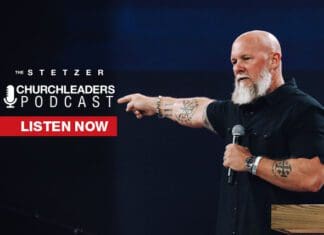I’ve been following the Lord for a little over 30 years now. And as I’ve watched the passing parade, some of the most zealous, devout, committed Christians that I knew in their 20s and 30s are now atheists in their 40s.
They filed Chapter 7 on their Christian life.
Each of them shared one of three things in common:
- They chose to become offended by God when He didn’t meet their expectations.
- They chose to become bitter at others when they didn’t meet their expectations.
- They made provision for their flesh and crossed an invisible line in which they were completely overtaken by it.
Holding on to faith and a good conscience. Some have rejected these and so have shipwrecked their faith (1 Timothy 1:19).
Likewise, some of the people who claimed to be utterly dedicated to the vision of God’s central mission later abandoned it for an easier, less costly, more popular and convenient life.
They filed Chapter 11 on their spiritual progress.
The one who received the seed that fell among the thorns is the man who hears the word, but the worries of this life and the deceitfulness of wealth choke it, making it unfruitful (Matthew 13:22).
Point: There are no guarantees when it comes to our walk with the Lord. What God knows mortals do not.
The truth is, all of us are hanging by grace. Every day.
“The one who endures until the end will be delivered,” Jesus said.
John wrote, “They went out from us, but they did not really belong to us. For if they had belonged to us, they would have remained with us; but their going showed that none of them belonged to us” (1 John 2:19).
The entire culture is pressing on us to take our eye off the ball. To divert our attention from Jesus to the flesh, the world, and the enticements of the enemy. Egypt, Babylon, and Sodom cry out to us every day from every quarter.
Consequently, we all need encouragement to go on with the Lord . . . to keep Christ before our eyes. This is one the key reasons why I blog and podcast.
Teetering on the edge of spiritual bankruptcy is no fun, but it’s a red flag to motivate you to seek spiritual encouragement. And to receive it.
If you’re down, you can bet that some Christian you know is up. And when they’re down, you can return the favor.
The antidote to spiritual bankruptcy?
See to it, brothers, that none of you has a sinful, unbelieving heart that turns away from the living God. But encourage one another daily, as long as it is called Today, so that none of you may be hardened by sin’s deceitfulness. We have come to share in Christ if we hold firmly till the end the confidence we had at first (Hebrews 3:12-14).
According to the writer of Hebrews, the antidote to an unbelieving hard heart, the deceitfulness of sin, and turning away from the living God is mutual encouragement.
Not mutual tear-down, mutual bickering, mutual hair-splitting, mutual condemning, mutual finger-pointing or mutual in-fighting.
But mutual encouragement.
But if you bite and devour one another, take heed that you don’t consume one another (Galatians 5:13).
There once were two cats of Kilkenny
Each thought there was one cat too many
So they fought and they fit
And they scratched and they bit
‘Til excepting their nails
And the tips of their tails
Instead of two cats there weren’t any.
Acknowledging to yourself and to someone else that you’re stuck in your walk is the first step to getting unstuck. And finding people and communities where mutual encouragement is the norm (opposed to tear-down and in-fighting) is the best way to protect your spirit.
Spiritual bankruptcy can be avoided.
And let us consider how we may spur one another on toward love and good deeds (Hebrews 10:24).














